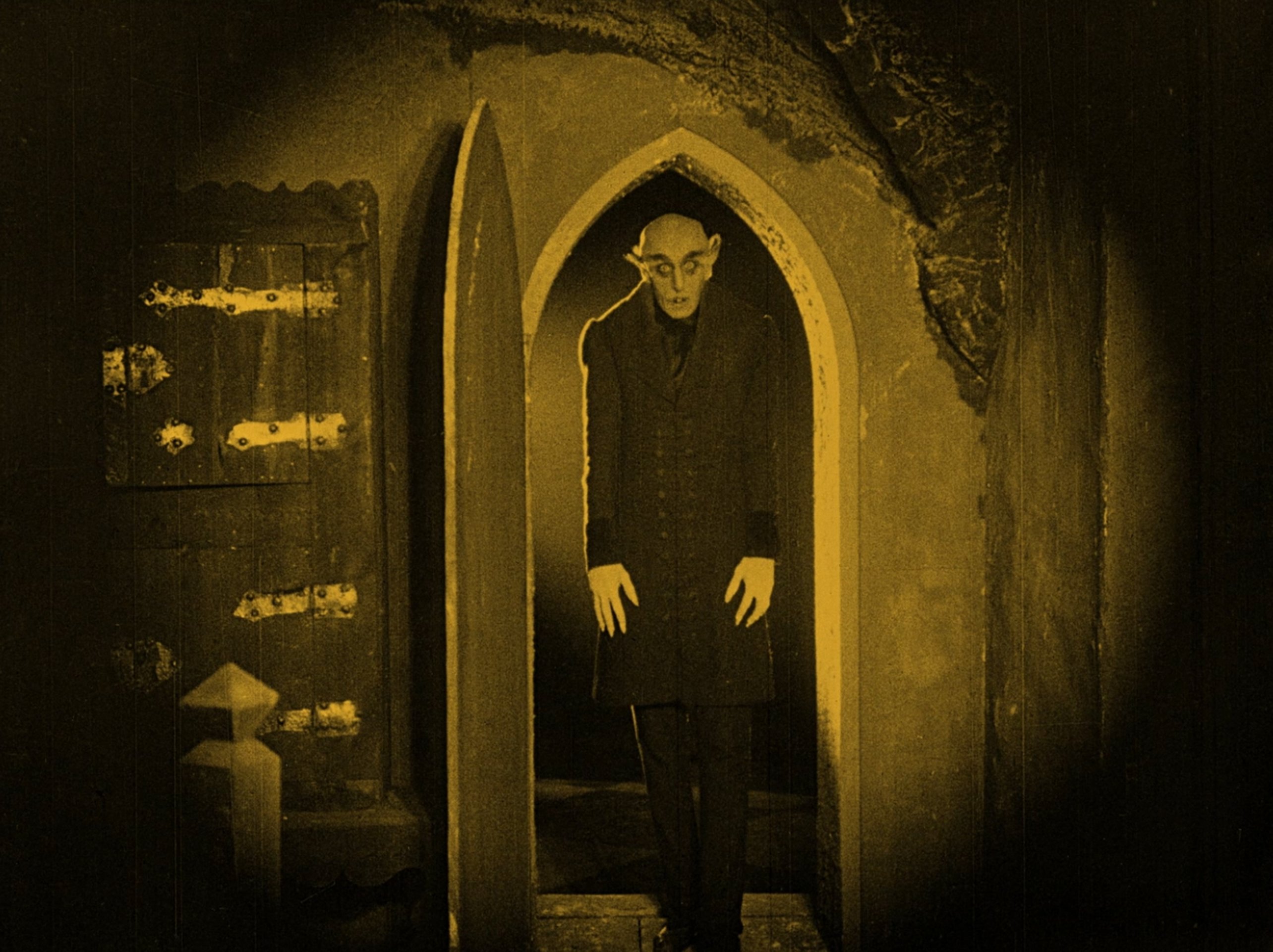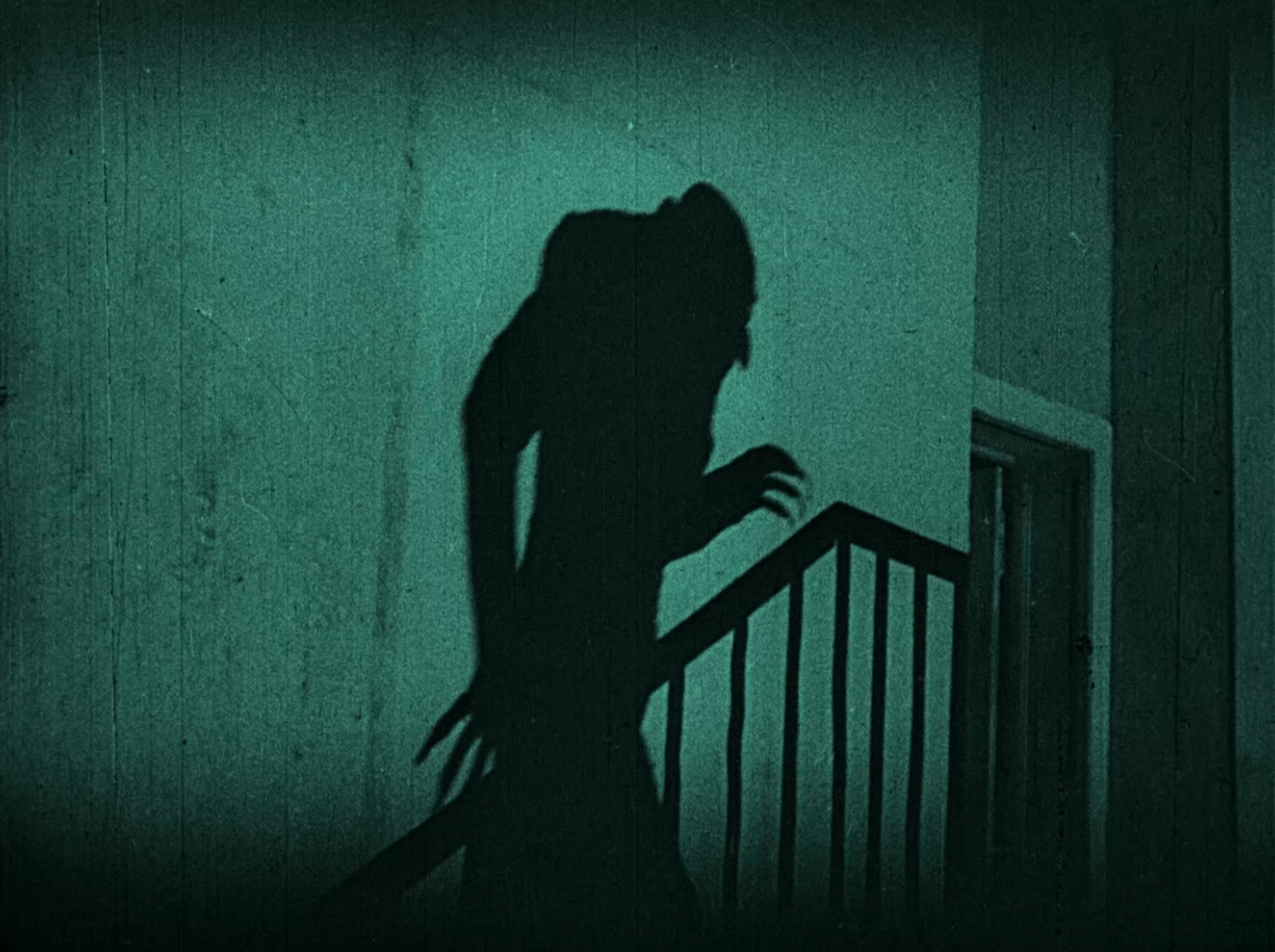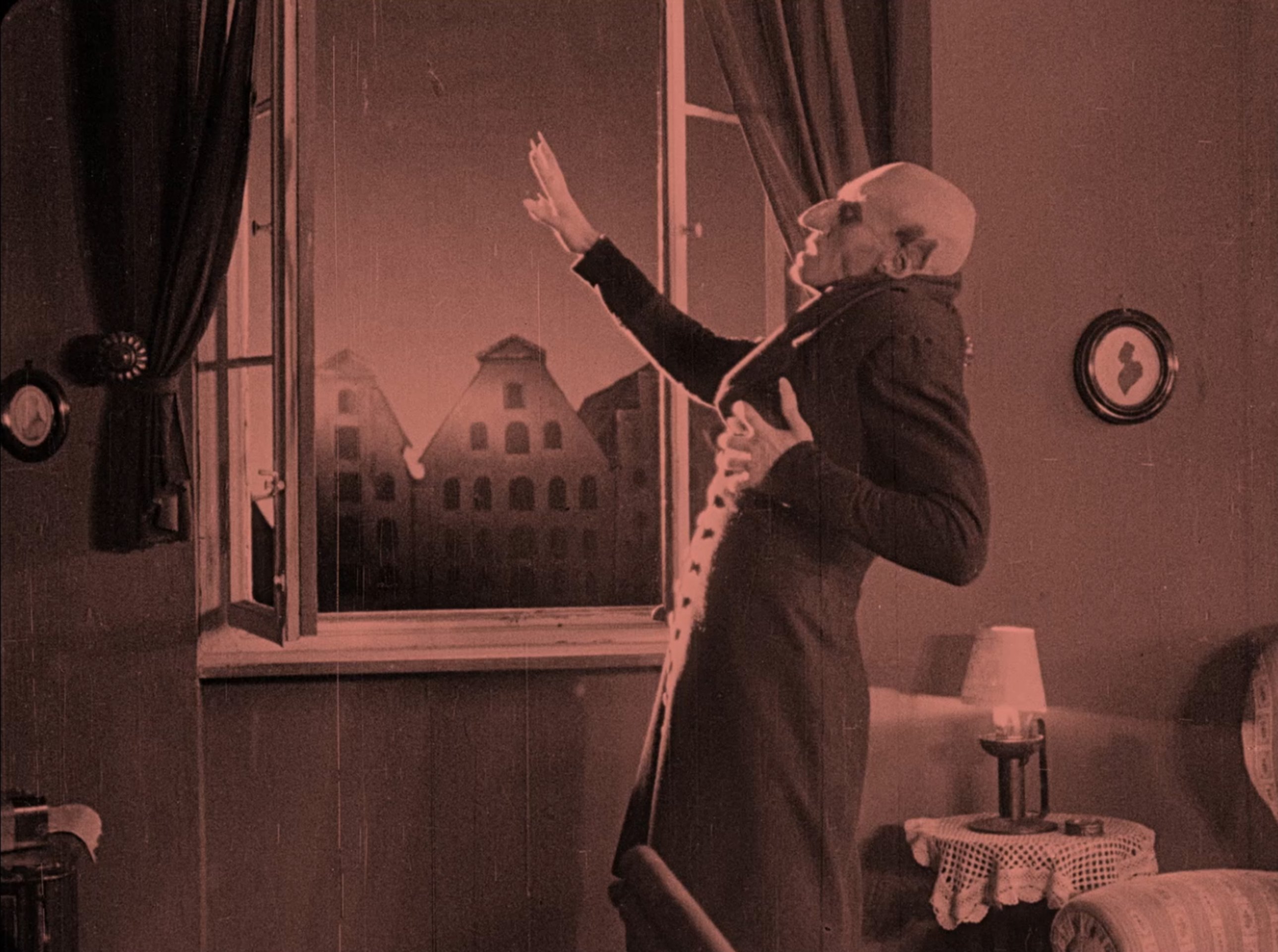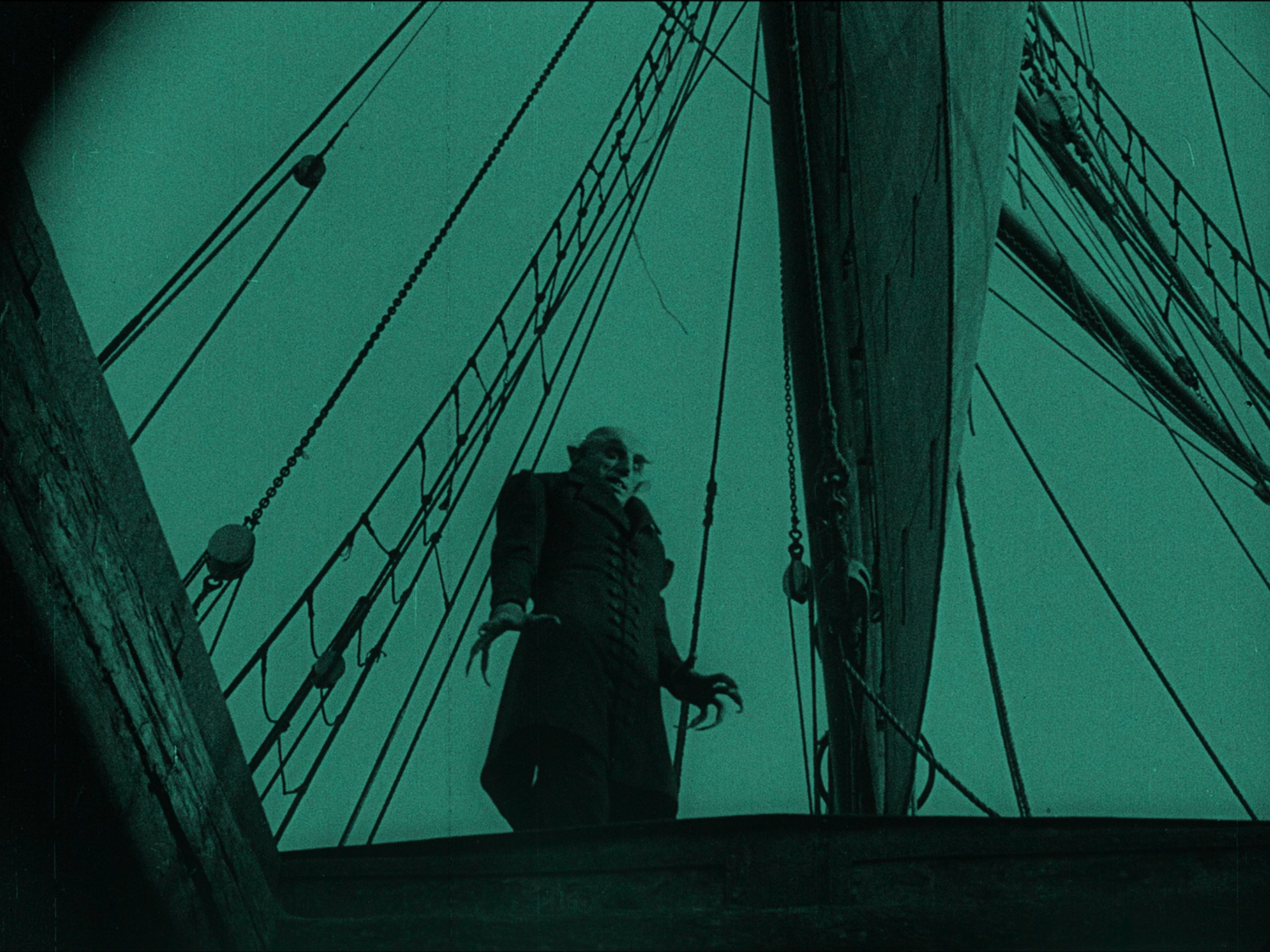Menu Biuletynu Informacji
NOSFERATU: A SYMPHONY OF HORROR

NOSFERATU: A SYMPHONY OF HORROR
Nosferatu: A Symphony of Horror
(Nosferatu, eine Symphonie des Grauens, 1922)
Dir. Friedrich Wilhelm Murnau; script Henrik Galeen, based on Bram Stoker’s novel Dracula; cinemat. Fritz Arno Wagner
Prana-Film GmbH, Germany, 1922
Cast: Max Schreck (Count Orlok), Greta Schröder (Ellen), Gustaw von Wangenheim (Hutter), Alexander Granach (Knock)
Wisburg, 1838. Thomas Hutter, a real estate agent, is sent to Transylvania to close a deal with the mysterious Count Orlok. His wife Ellen's sense of foreboding about the trip is soon confirmed...
A masterpiece of the silent era and a horror classic, this was the first (and for many still the best) vampire film. It set the template for the genre, giving a (genuinely eerie) introduction to a gallery of screen vampires. In keeping with post-war German angst – but also appealing to the ordinary human fear of a menacing, unknown force – this story of a creature who feeds on blood and carries the plague (Nosferatu is Greek for 'disease-bearer') has often been interpreted as a metaphor for an all-encompassing evil that overwhelms goodness. It has also been seen as a tale of forbidden love, a pure love willing to make sacrifices, as well as anti-Semitic propaganda and even a prophetic warning of the birth of a Nazi tyrant.
Though often classified as an expressionist work, the film transcends the genre's typical framework. Inspired by 19th-century Romantic art, it makes excellent use of the dramatic potential of landscapes (reflecting the emotional states of the protagonists) and is also highly innovative technically (such as the famous scene of the carriage ride through the forest, shot as a negative image).
A cinematic legend with iconic shots (such as Nosferatu's shadow), the film has become steeped in lore, including the myth that Max Schreck was an actual vampire. It is also a legendary example of plagiarism: Henrik Galeen's screenplay closely adapted Bram Stoker's novel Dracula (1897) – with just a few minor modifications and without the rights being secured. The result was a lawsuit that the producer lost to Stoker's widow. Faced with the production company's subsequent bankruptcy, she demanded the destruction of the film's negatives and all prints. Fortunately, some prints survived, allowing this cinematic "plague" to spread around the world and establish the vampire as an immortal figure in (pop)culture, with numerous films inspired by Nosferatu (and Dracula).
Katarzyna Wajda
The film was reconstructed and restored in 2005, using surviving export prints: two French prints from the Cinémathèque Française collection and a Czech print from the Bundesarchiv-Filmarchiv collection. The intertitles were reconstructed based on an incomplete German print.
music: Stefan Wesołowski
THURSDAY | NOVEMBER 28 | 20:30
introduction to the movie: Tomasz Kolankiewicz
Contact
National Film Archive – Audiovisual Institute
www.fina.gov.pl
Wałbrzyska Street 3/5
02-739 Warsaw
tel: +48 22 38 04 902
tel: +48 22 38 04 904
e-mail: kancelaria@fina.gov.pl
Cinema Iluzjon
www.iluzjon.fn.org.pl
ul. Narbutta 50a
02-541 Warszawa
tel. +48 22 848 33 33
+48 22 182 46 41
e-mail: kasa.iluzjon@fina.gov.pl




